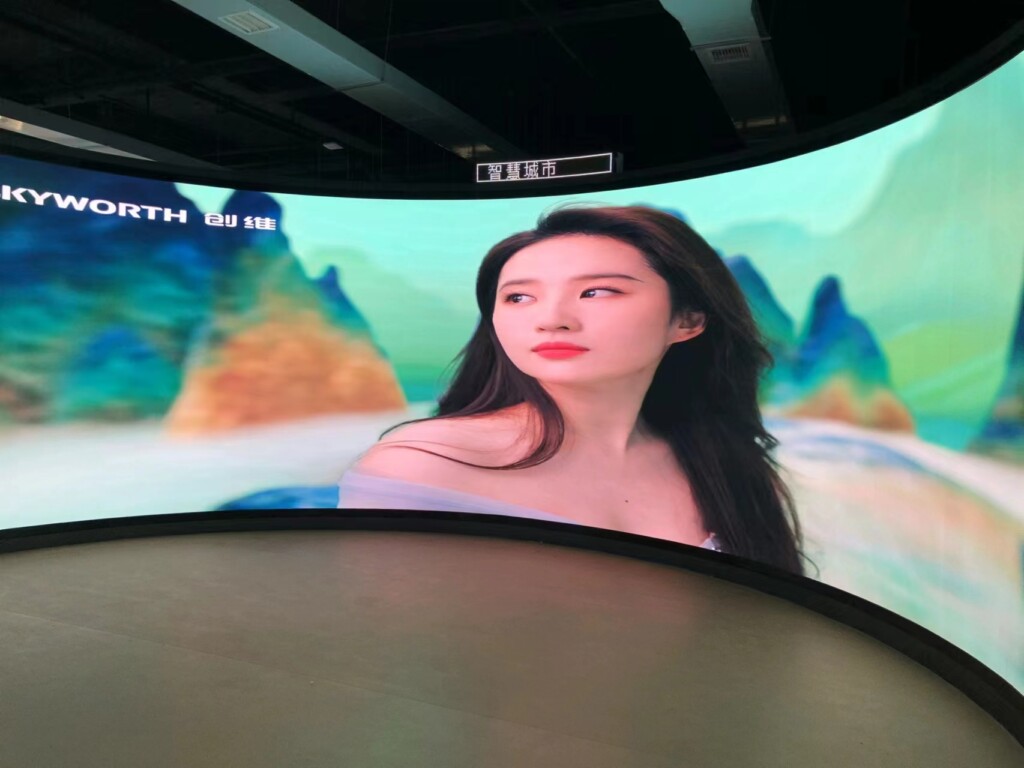For stage performance settings, the brightness and contrast of LED displays are essential factors—they directly influence how the audience perceives content, whether it’s a concert, theater production, or dance performance. Stages often have complex lighting setups: some use intense spotlights, while others rely on soft ambient light. If an LED display’s brightness is too low, it will be overpowered by stage lighting, making content like background videos or song lyrics difficult to view. On the other hand, excessive brightness can cause glare and discomfort for the audience, particularly those seated near the stage.
A useful guideline is to select an LED display with adjustable brightness (typically ranging from 1000 to 3000 nits) so you can adjust it according to the stage’s lighting conditions. Contrast is equally important—it refers to the difference between the darkest and brightest parts of the display. High contrast delivers sharper images and more vibrant colors, which is critical for stage visuals. For example, if the display shows a dark night scene in a play, high contrast ensures details like a character’s facial features remain visible instead of blending into the dark background. This way, every audience member—whether in the front row or the back of the venue—can enjoy clear, comfortable visuals.
The resolution of LED displays is highly important for stage performances, as it determines the clarity of content such as live camera feeds, pre-recorded videos, or dynamic graphics. Consider this: using a low-resolution display for a concert with close-up shots of the performer could result in blurry faces or pixelated text, which undermines the immersive experience for the audience.
However, the highest resolution isn’t necessary for every stage. It depends on two key factors: the size of the display and the distance from which the audience will view it. For small stages (like those in clubs) where the audience is close, a higher resolution (such as P2 or P1.5, where “P” stands for pixel pitch—the smaller the number, the denser the pixels) is ideal. For large outdoor stages with a distant audience, a slightly lower resolution (like P3 or P4) is sufficient—since the distance reduces the visibility of pixelation, and it also offers better cost-efficiency. Choosing the right resolution ensures stage content is clear without wasting money on unnecessary pixel density, which is a significant advantage for event organizers.
Stage setups are constantly changing—one performance might require a large, flat LED wall, while another could need curved displays or even suspended panels. This is why the installation options and flexibility of LED displays are key factors to consider. You don’t want a display that only works for one type of stage; it should be able to adapt to different performance requirements.
Modular LED displays are an excellent choice in this regard. They consist of small, detachable panels that can be assembled into any shape or size—including curved, rectangular, or even irregular designs (like a circular display for a circus performance). They’re also easy to install and disassemble, which saves time for stage crews who often need to set up and take down equipment quickly between shows. Another aspect to consider is weight: if the stage has limited weight-bearing capacity (such as a temporary stage), lightweight LED panels are preferable—they won’t place excessive strain on the structure. Flexible installation means the LED display can align with any stage concept, helping performers create unique, memorable shows that stand out.
Stage performances can last for hours, and some events (like music festivals) run for multiple days—so LED displays need to be durable and reliable. The worst-case scenario is a display shutting down mid-performance due to overheating or a damaged panel, which would disrupt the show and disappoint the audience.
First, look for LED displays with effective heat dissipation. Stages can get hot (due to stage lighting and body heat from the crowd), and inadequate cooling can cause the display’s components to malfunction. Displays equipped with built-in fans or aluminum heat sinks perform well in this regard. Second, check the durability of the panels: opt for displays with scratch-resistant and impact-resistant surfaces, as stage crews may accidentally bump into them during setup. Third, choose displays from reputable brands known for stable performance—they should have a low failure rate, even with prolonged use. A durable, reliable LED display reduces concerns about technical issues, allowing event organizers and performers to focus on delivering a great show rather than troubleshooting equipment.
In summary, when selecting LED displays for stage performance scenarios, you should focus on four key factors: brightness and contrast (for clear, comfortable visuals), resolution (matched to the stage size and audience viewing distance), installation flexibility (to suit different stage designs), and durability/reliability (for uninterrupted performance). Each factor plays a role in ensuring the LED display enhances the stage show rather than hindering it.
The right LED display does more than just show content—it creates an immersive experience for the audience and supports the creativity of performers. For example, high brightness ensures visuals cut through stage lighting, modular design enables the creation of unique shapes, and reliability prevents mid-show disruptions. Investing in a well-chosen LED display helps event organizers deliver smooth, professional shows that leave a lasting impression on the audience. Whether it’s a small theater performance or a large outdoor concert, the right LED display is a crucial tool for achieving stage success.

